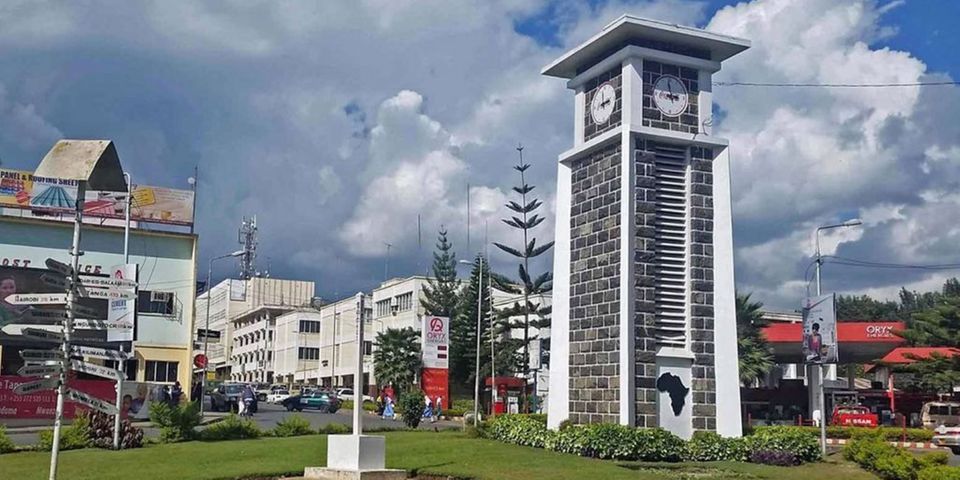
In the recent past, Arusha’s international allure started to waiver but efforts by President Samia Suluhu Hassan’s administration have seen Arusha rise back to its former prestige
Dar es Salaam. At the dawn of independence, in 1960, Nairobi was the regional hub.
Not only was it the most developed city hosting East Africa’s headquarters of multinationals, but it had also been hosting the colonially-engineered regional organization, the East African High Commission (EAHC), and its affiliate organizations, since January 1, 1948.
When the EAHC had to be transformed into a new body, the East African Common Services Organization (EACSO), at Tanganyika’s independence on December 9, 1961, Nairobi was the natural choice for its headquarters.
RELATED Arusha master plan expanded
Arusha, though a tourist town of national importance, had yet to become a regional Safari hub, a position that was being held by Nairobi, despite its close proximity to world-renowned tourist attractions.
But Arusha’s fortunes changed when East African leaders- Julius Nyerere of Tanzania, Jomo Kenyatta of Kenya and Milton Obote of Uganda- chose the town to host the first East African Community (EAC-I).
A confluence of subsequent factors cemented Arusha’s position as a regional hub of choice.
The announcement of the Arusha Declaration, Nyerere’s socio-economical and philosophical developmental blueprint that reverberated across the world as an African revolutionary manifesto, further focused global attention on the town.
When the Kilimanjaro International Airport (KIA) was established in 1971, Arusha started hosting international conferences and forums that further cemented the town’s global status and its tourist credentials.
Even though the EAC founding fathers had no intention of making Arusha a regional hub, as their decision to spread out the headquarters of EAC institutions among EAC capital cities indicated, Arusha was already on its way to international status.
“It is true that the decision to make Arusha the headquarters of the first East African Community (EAC-I) changed Arusha’s fortunes for the better,” Mr Apolinary Tairo, a seasoned journalist who has lived in Arusha and has covered the city extensively over the years, says.
“… But Arusha was always going to be a natural international hub. That is why, when the EAC-I collapsed, the town’s international stature was not dented. In fact, it continued to rise,” Mr Tairo adds.
He notes that the closure of the Kenya-Tanzania border in March 1977 averted Arusha’s decline and, ironically, cut the town’s image as an offshoot of Nairobi.
“Instead of landing in Nairobi and proceeding by vehicle to Arusha, tourists had to come directly to Arusha through KIA or through Dar es Salaam, which saw the town’s global stature evolve in a unique way, separately from Nairobi,” Mr Tairo noted.
When the international community was looking for an ideal city to host the International Criminal Tribunal for Rwanda in 1994, Arusha was easily chosen.
This came after the city had hosted peace negotiations by Rwanda’s warring factions since the early 1990s.
The city went on to provide the venue for the Burundi peace negotiations later on.
When East African presidents decided to re-establish the Community (EAC-II) in 1999, Arusha was the ideal headquarters.
Despite an agreement to spread out the Community’s organs and institutions among EAC member states, most of them found homes in Arusha.
These include the East African Legislative Assembly (Eala), the East African Court of Justice (EACJ), the East African Business Council (EABC), and the East African Community Competition Authority (EACA).
The return of the EAC to Arusha further reinvigorated Arusha’s international stature, such that at the start of the millennium, Bill Clinton, the first sitting American President to visit Tanzania, crowned the town as the Geneva of Africa.
In the recent past, especially between 2016 and 2021, Arusha’s global status started to waiver.
Seemingly sensing the opportunity, Rwandan authorities started positioning Kigali as the regional hub for international meetings and conferences. The Covid-19 pandemic added to Arusha’s woes.
But efforts by President Samia Suluhu Hassan’s administration have seen Arusha rising back to its former prestige.
Tourism has rebounded beyond pre-pandemic levels. International conferences and forums are now back-to-back and international organizations are opting for the town as their headquarters.
Currently, the Pan African Postal Union (PAP) is building its headquarters in Arusha. At least 21 continental, regional, and international organizations call Arusha home, excluding EAC institutions.
They include the African Court on Human and Peoples’ Rights (ACHPR), the Centre on Integrated Rural Development for Africa (CIRDA), the African Society of International Law (AfSIL), the African Union Advisory Board Against Corruption (AU-ABC), the East Africa Local Governments Association (EALGA), and the East African Meteorological Society (EAfMS).
Others are the International Residual Mechanism for Criminal Tribunals (IRMCT), which is currently wounding up its operations, the College of Surgeons of East, Central and Southern Africa (COSECSA), the Coalition for an Effective African Court on Human and Peoples’ Rights (the African Court Coalition), the College of Pathologists of Central Eastern & Southern Africa (COPECSA); and the East African Integrated Disease Surveillance Network (EAIDSNet).
And yet other international organizations are the All Africa Lutheran Churches Information and Coordination Centre (AL-ICE), the African Institute of International Law (AIIL), and the East African Civil Society Organisations’ Forum (EACSOF).
On the list are also institutions such as the Eastern and Southern African Management Institute (ESAMI); the East African Youth Council; the Eastern African Support Unit for NGOs; the East African Securities Regulatory Authorities (EASRA) and the Central and Southern African Health Community (ECSA).
___
Source here
